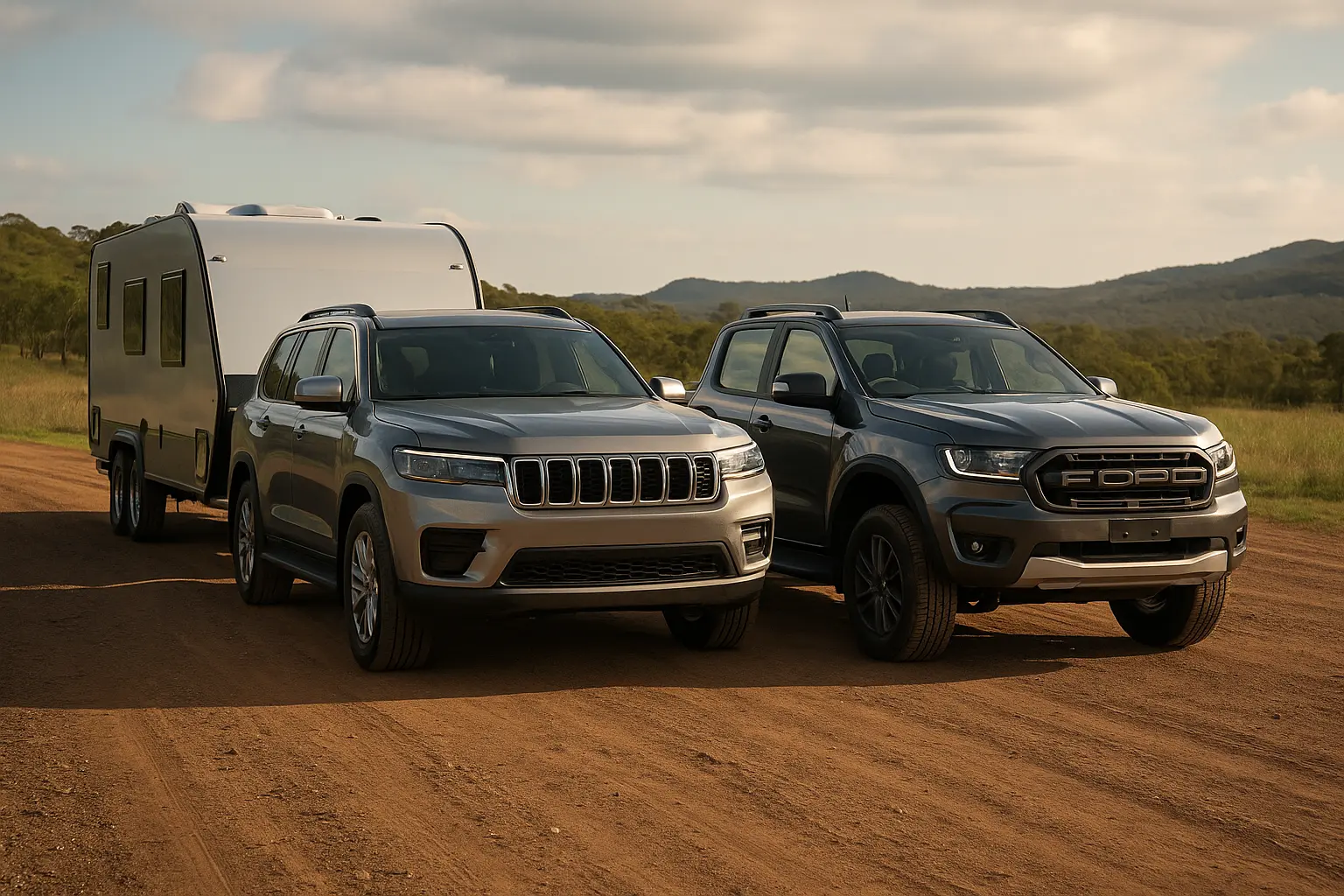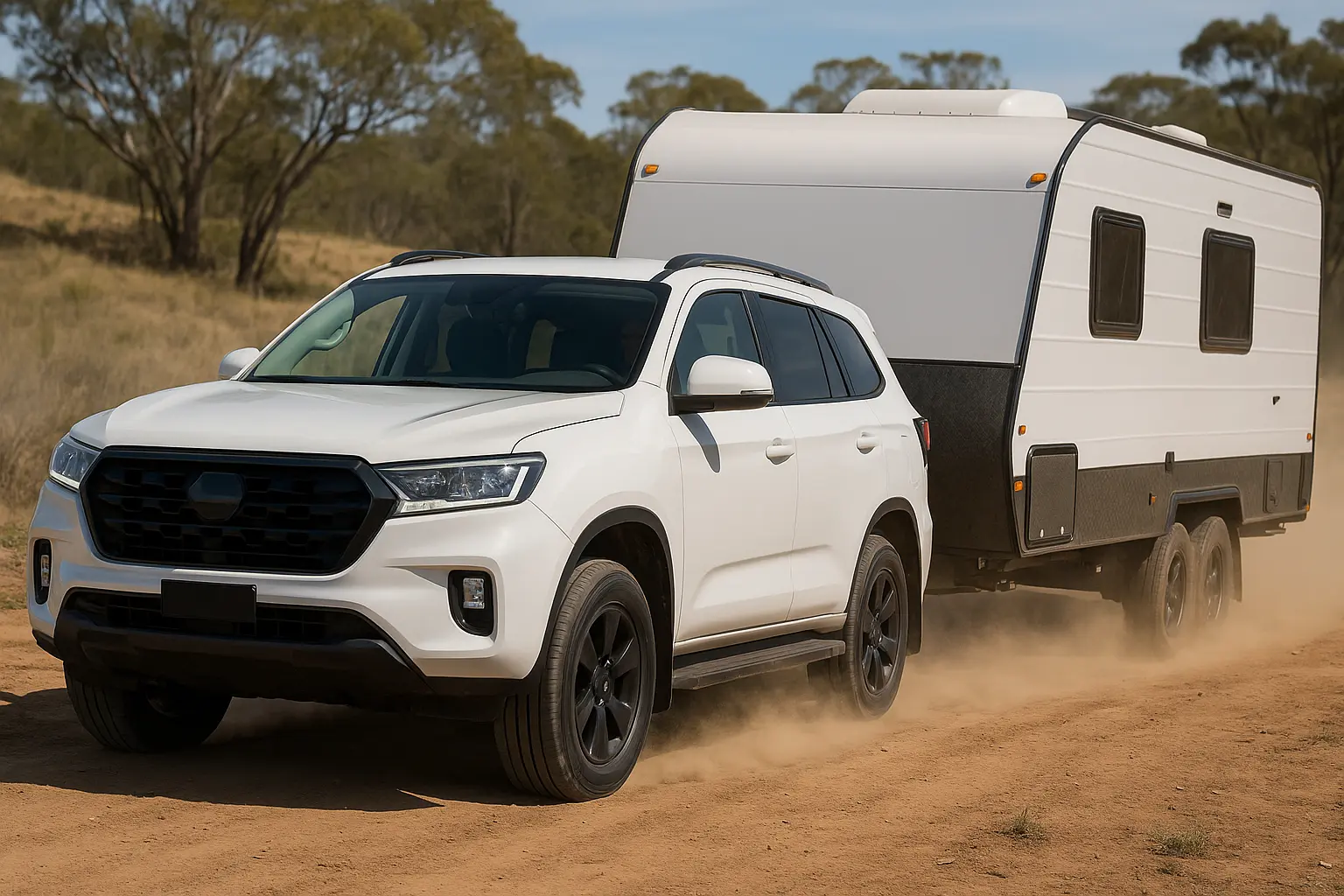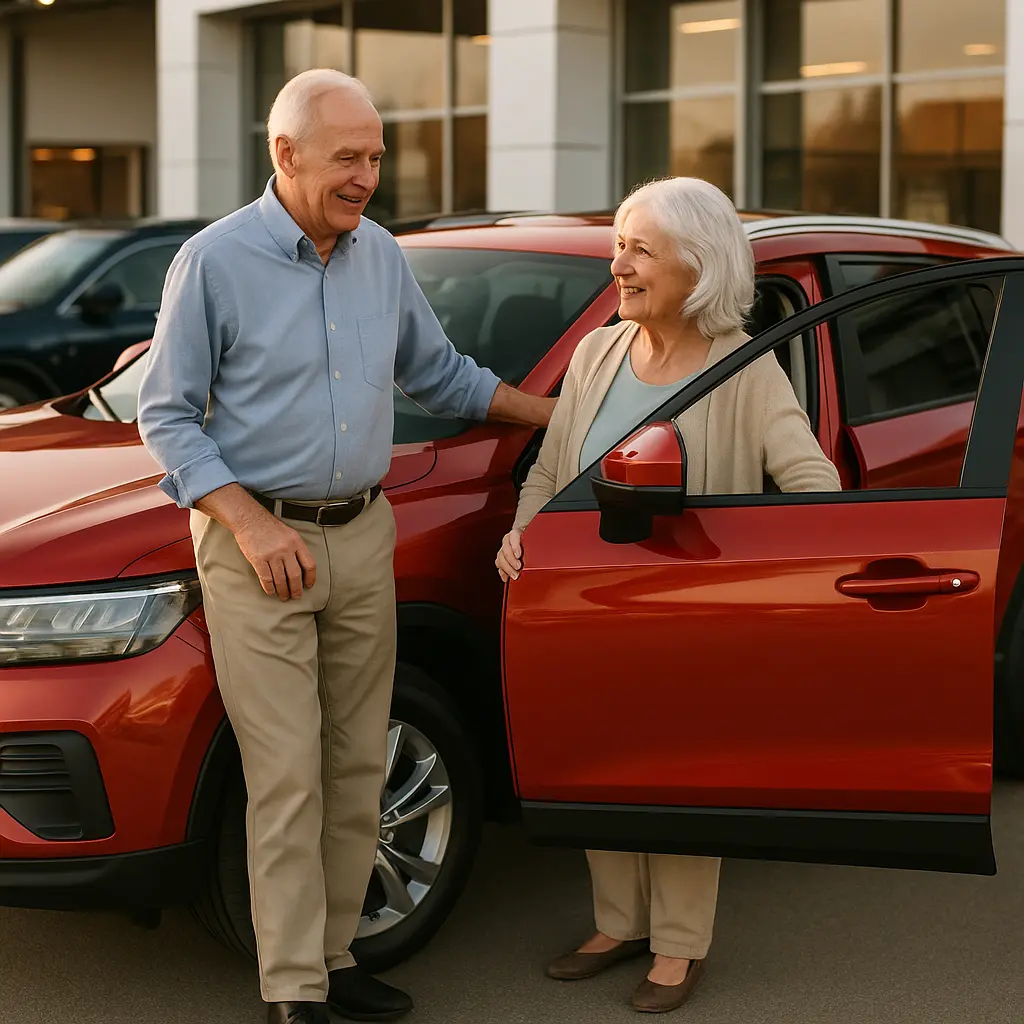Towing Capacity Guide for Aussie Drivers – SUVs vs Utes in 2025

Introduction: Why Towing Matters More Than Ever
Australia is a land built for road trips, caravanning adventures, and outdoor lifestyles — and in 2025, more Aussies than ever are hitching trailers, boats, or campers to their vehicles. Whether you’re heading up the coast with a camper, towing a boat for a weekend getaway, or moving gear for your tradie gig, knowing your vehicle’s towing capacity is crucial.
And here’s the real dilemma: Should you go for a trusty SUV or a rugged ute?
This comprehensive guide will help Aussie drivers decode towing jargon, understand government regulations, compare top models, and decide between SUV and ute towing — all based on the latest 2025 data.
Chapter 1: Key Towing Terms Explained
Before we dive into SUVs vs utes, let’s unpack the terminology that often confuses even seasoned drivers.
1. Towing Capacity (Braked vs Unbraked)
Braked towing capacity refers to the maximum weight a vehicle can tow when the trailer has its own braking system.
Unbraked towing capacity is the maximum towing weight without a trailer brake. It’s usually far less — around 750kg for most vehicles.
2. GVM (Gross Vehicle Mass)
This is the total maximum weight of your vehicle — including passengers, fuel, cargo, and towball download — as specified by the manufacturer.
3. GCM (Gross Combination Mass)
The combined total mass of your vehicle and what it tows. Exceeding this can be illegal and dangerous.
4. Towball Download (TBD)
The weight that the trailer applies vertically on the vehicle's towball. It’s typically 10% of the trailer’s weight.
Chapter 2: Understanding Australia’s Towing Laws in 2025
1. Licensing & Legal Limits
In most states, a standard C-class license lets you tow trailers up to 4.5 tonnes GVM — provided your vehicle can legally do it. Anything heavier requires a Light Rigid (LR) or Medium Rigid (MR) license.
2. Speed Restrictions
In NSW and WA, if towing a trailer over 750kg, you must stay under 100km/h, even on highways.
3. Electronic Stability Control (ESC)
Mandatory for trailers over 2 tonnes GVM from 2024. New SUVs and utes in 2025 come equipped with trailer sway control for added safety.
4. Breakaway System Requirements
Caravans over 2 tonnes must have a breakaway system that can activate trailer brakes if it detaches — enforced across all states.
Chapter 3: SUV vs Ute Towing – What’s the Difference?
SUVs: Comfort Meets Capability
Modern SUVs like the Toyota Prado, Ford Everest, and Isuzu MU-X can tow up to 3,500kg (braked) — the same as many utes. The advantage? SUVs offer more interior comfort and tech.
Pros:
Better ride quality for families
More passenger comfort
AWD capability
Advanced safety and infotainment tech
Cons:
Payload and GCM often more limited
Rear suspension not always built for heavy loads
Less flexibility for tray setups
Utes: Built for Heavy Loads and Work
Utes like the Toyota HiLux, Ford Ranger, and Isuzu D-MAX dominate towing in Australia. Their body-on-frame design, rear leaf suspension, and higher GVM ratings make them ideal for tough towing.
Pros:
Typically higher payload capacity
Better suited for towing tools, trailers, caravans
More accessory options (canopy, racks, trays)
Many dual-cab options for family + work
Cons:
Ride comfort lags behind SUVs
Rear seat space can be tighter
Heavier steering and handling feel
Chapter 4: Top Towing SUVs in Australia 2025
Here’s a breakdown of the most capable and popular SUVs for towing in 2025:
| SUV | Braked Towing Capacity | GVM | GCM |
|---|---|---|---|
| Toyota LandCruiser 300 Series | 3,500kg | 3,280kg | 6,850kg |
| Ford Everest Platinum | 3,500kg | 3,200kg | 6,400kg |
| Isuzu MU-X LS-T | 3,500kg | 2,750kg | 5,900kg |
| Toyota Prado 2025 | 3,500kg | 3,150kg | 6,000kg |
| Nissan Patrol Warrior | 3,500kg | 3,500kg | 7,300kg |
Notable Mentions:
Mitsubishi Pajero Sport – 3,100kg
Jeep Grand Cherokee L – 2,800kg
Hyundai Palisade (Diesel) – 2,200kg
Chapter 5: Top Towing Utes in Australia 2025
Utes are still the go-to for towing in remote areas, job sites, and long-haul touring. Here’s the leaderboard:
| Ute | Braked Towing Capacity | GVM | GCM |
|---|---|---|---|
| Ford Ranger Wildtrak V6 | 3,500kg | 3,350kg | 6,500kg |
| Toyota HiLux Rogue | 3,500kg | 3,100kg | 6,000kg |
| Isuzu D-MAX X-Terrain | 3,500kg | 3,100kg | 6,000kg |
| Mazda BT-50 GT | 3,500kg | 3,100kg | 6,000kg |
| GWM Cannon-X | 3,000kg | 3,050kg | 5,555kg |
Notable Mentions:
Ram 1500 Express – 4,500kg
Chevrolet Silverado 1500 – 4,500kg
LDV T60 Max – 3,000kg
Chapter 6: What to Consider When Choosing Between SUV and Ute
1. What Are You Towing?
Boat or Jet Ski: SUV or ute (2,000–2,500kg usually)
Caravan: Ute preferred if over 2,500kg
Camper Trailer: Mid-size SUV or ute
Work Trailer or Equipment: Ute is better
Horse Float: Heavy SUV or ute required
2. Where Are You Towing?
Long-distance highway touring? Choose comfort: SUV
Outback and remote access? Choose durability: ute
Urban towing + daily driver? SUV wins
3. Fuel Type
Most powerful towing vehicles are diesel for torque
EVs and hybrids not yet ideal for heavy towing
Chapter 7: Towing Tech in 2025 Vehicles
1. Trailer Sway Control
Standard in most new SUVs and utes. Automatically brakes individual wheels if sway is detected.
2. 360° Camera with Trailer Assist
New Ford Ranger and Everest have trailer reversing assist — a game changer for caravanners.
3. Tow Mode Transmission Mapping
Adjusts gear shift timing to reduce strain while towing — common in newer Toyota and Ford models.
4. Blind Spot Trailer Detection
Automatically extends blind spot monitoring to trailer length.
Chapter 8: Ute vs SUV – Best Picks by Use Case
| Use Case | Recommended Type | Best Model (2025) |
|---|---|---|
| Family + Caravan Towing | SUV | Ford Everest Platinum |
| Tradie with Gear + Trailer | Ute | Toyota HiLux Rogue |
| Off-Road Touring + Camper | Ute | Isuzu D-MAX X-Terrain |
| Urban Use + Occasional Towing | SUV | Toyota Prado |
| Heavy Tow (e.g. horse float) | Ute | Ford Ranger V6 |
Chapter 9: Tips for Safe and Legal Towing in Australia
Know your vehicle’s GCM and never exceed it
Don’t overload the trailer – check ATM (Aggregate Trailer Mass)
Balance trailer load – place heavy items near the axle
Use proper towing mirrors for wider caravans
Check tyre pressures on both vehicle and trailer
Ensure trailer lights and brakes are functioning
Conclusion: SUV or Ute – Which Should You Choose for Towing in 2025?
The answer depends entirely on what you tow, how often, and where.
For families and long trips? Go SUV – Ford Everest or Toyota Prado
For tradies or off-roaders? Go Ute – Ranger, D-MAX, or HiLux
For anything above 3.5 tonnes? Consider American pickups like the Ram 1500
With so many new models in 2025 offering smarter tech, tougher builds, and better comfort, it’s never been easier to match your towing needs with the right vehicle.

Ruby McKenzie
Ruby McKenzie is a dynamic content writer from Brisbane with a background in journalism and public relations. She thrives on transforming complex ideas into relatable content across tech, travel, and culture niches.
Leave a comment
Your email address will not be published. Required fields are marked *
Related posts
Tesla Model Y Review | Electric SUV | Range | Price in Australia
You might be interested in
Ford Everest Review | 4WD SUV | Off-Road Performance | Price Australia
Nov 01, 202517,623 viewsBest Cars for Seniors in Australia: Easy Access, Comfort, and Safety for Every Drive
Nov 01, 202518,758 views



















